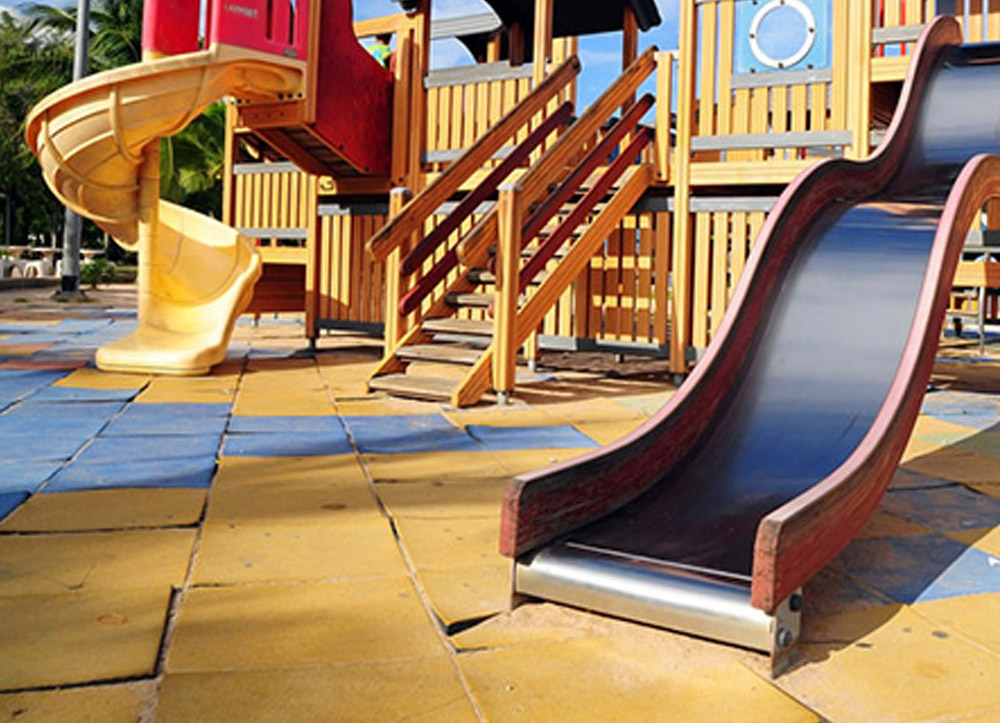Care & Maintenance
Keeping a playground well-maintained is as much of a safety issue as it is a cosmetic issue. Once installed, maintenance is a much larger commitment for loose-fill materials than for unitary surfaces due to the fact that they must be regularly inspected for consistent depth of material, hidden foreign objects and excessive compaction.
Care & Maintenance
Winners
Unitary surfaces rate highly for care and maintenance as they don’t require much after being installed. Maintenance typically only requires blowing or washing off leaves as needed and occasionally inspecting the surface for foreign objects.

Care & Maintenance
Losers
Loose-fill surfacing materials receive lower grades due to the ongoing maintenance they require to keep them safe for children. As material compacts and displaces, certain areas of the playground are left without adequate coverage, requiring raking and “topping off” of material. Rock-based loose-fill, such as pea gravel and sand, have the additional risk of forming into hardpan, which occurs when it compacts below the surface and has a consistency similar to concrete. Loose-fill materials also need to be replaced annually or every few years, depending on the amount of activity.
While rubber tiles are not a loose-fill option, they also get low scores for their propensity to warp and shift over time.


